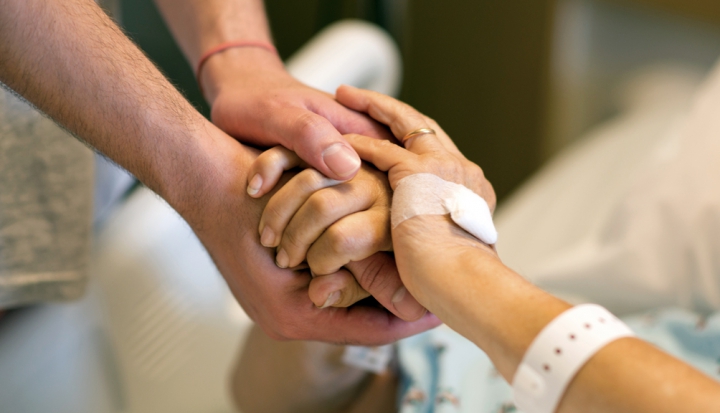As Ebola patients began to die in Africa last summer, it was not difficult for me to revisit the memory of my first AIDS patient. His death hurled me into an abyss, searching a dark corner of my own soul where, buried deep, lay the long held question of the value and meaning of human suffering.
Doctors in California had told him, “Go home.” There was nothing more they could do for him. So he did, returning to the Midwest, renting an apartment, contacting his family. Soon he became totally incapacitated by disease, lying on his apartment floor without any family venturing to his door. They knew he was sick. They explained to me over the phone that they didn’t want to catch what he had.
“But he was there for over a week,” I said. “You could’ve at least called an ambulance for him.”
His father’s voice rang with authority as he told me it was God’s judgment on the way his son had conducted his life. I was not to call him again.
No one at the hospital knew exactly what was wrong with his son, and, frankly, as the nurse in charge of the floor, I thought twice about going into the room myself. I already had several of my nurses tell me they didn’t want to go near this patient. So it came down to me. If I didn’t walk into the room, who would?
We Christians are numbed by our holy words. “This is my body, given up for you” states clearly what Jesus meant and what we are to be. It is not confined to the edges of the host—we are to be an ongoing extension of his actions in the world.
The actions of Jesus were pretty straightforward. Wherever he was, he healed. People came to him and were brought to him. He also went to them. The clinic of Jesus cost a meal and bed at most and served everyone—Jew, Arab, Roman, as well as all the folks listed in Acts 2. And he told his followers to act the same way. Jesus did not mince his words.
After the Council of Nicea in 325 and the ending of persecution, Christians began institutionalizing the commands of Jesus to care for the poor and sick. Sts. Sampson and Basil of Constantinople and Caesarea are two of the early builders of what were known as freestanding places of care for the sick, the forerunners of today’s hospitals.
Christian charity, not just hospitality to pilgrims, but charity in attending the sick and suffering, was expected of anyone who called themselves a follower of Jesus. There was a full-bodied expectation of aligning one’s physical, mental, spiritual, emotional, and financial resources, as well as presence, with that of the ill. You were to accompany that person and to hold in tension within your own body and mind their grief, sorrows, pain, and suffering, just as Jesus had held the cross in his hands and walked it to Golgotha. It is through the use of the human body, the extension of it by monastics, religious, laypeople, and priests over the course of Christian history that traces a clean line to the steps of hospitals, clinics, and outpatient offices today.
By the time my patient arrived on my floor, his fever was 104 degrees; he was having seizures so hard he shook the metal bed frame. Placing him immediately into isolation, all I could hear, and what has filled my memory ever since, was the sound of his voice saying, “Please, nurse, bring a gun and kill me.”
But my team of nurses, physicians, ancillary personnel, people from the dietary department, and even the hospital administration all bent forward into the headwind of human fear. We had no idea what we were dealing with. Could it be airborne? Highly contagious? Would the little thin paper gown I wore over my uniform be enough to protect my family and everyone else?
He did live for a few weeks. He gave up his body to us as we pumped into it, blew up his nose, and poured down his raw throat any experimental drug we could find. He was happy to be our guinea pig, hoping his suffering might help the next 50 people we would see with this new disease called AIDS.
And as he left this world, there were people beside him who had become his new family. Surrounding his bed, holding his hand, thanking him for what he had given all of us—the opportunity to act for his welfare just as our ancestors had done—links us in a distinguished and lengthy chain as the followers of Jesus, the healer.
It gives me comfort that I once said, “This is also my body given up for you” as I walked into the room of the subsequent AIDS patients for whom I cared, armed with a lot more knowledge and newer drugs with fewer painful side effects.
Still, I seek an answer for the value in human suffering. But one thing is certain—I have been a witness to the value of human life, working clumsily, many times, within that all too unseen and unclaimed realm of Christian charity where only the grace and Spirit of God is able to invade and, at times, prevail.
This column appeared in the July 2015 issue of U.S. Catholic (Vol. 80, No. 7, pages 47–48).
Image: © iStock/Spiderplay













Add comment